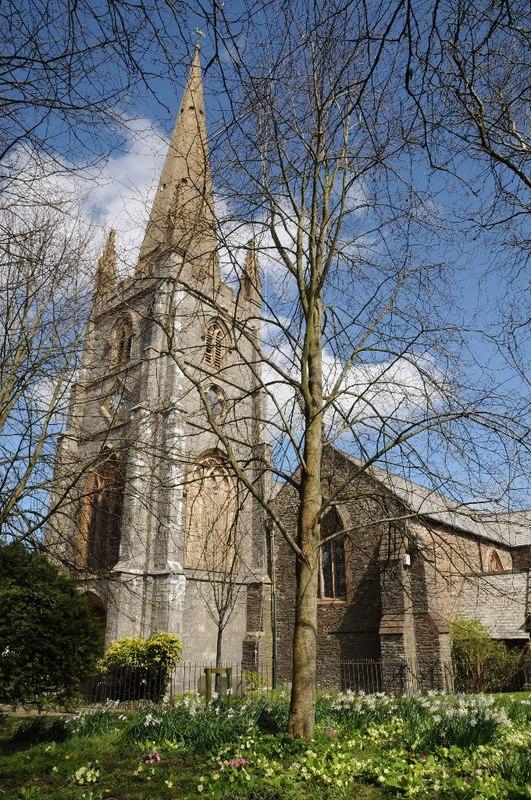St Giles
Little Torrington, Devon
Medieval church with rare architectural features set in a pretty mid-Devon village near RHS Rosemoor.

Great Torrington has a fascinating and colourful history.
Great Torrington, Devon
A priest, Humphrey, was instituted here in 1259, but the oldest parts of the building are 14th century. Leyland (1538) says ‘Torington is a great large toune and stondith on the brow of an hille and hath 3 fair streates yn it and a market everywke, and ons a yere apon St Michal’s day the best fayr.’
Outside the church there is a stone inscribed ‘This Church was blowen up with powder Febr ye 16th Anno 1645 and rebuilt Ao 1651’.
The Royalists who held the town had stored 80 barrels of gunpowder in the church. The Roundheads took the town and shut their prisoners up in the church. Somehow the explosion resulted, with great loss of life. In the churchyard a cobbled mound covers a mass grave.
Experts differ over how much of the church was destroyed. There are 14th century pillars at the east end of the nave, while the solid square pillars farther west are from 1651. The small Tudor room at the east end of the south aisle survived entirely, and was possibly the Tudor library mentioned in some records.
The resulting fire destroyed the old furnishings and monuments, but the Bible survived. The new pulpit, with carved cherubs, wreaths and gilding is typical 17th century. The Willis organ is finest in the West Country. The white ensign by the organ was used in the Normandy landings in 1944, and presented by Captain Sutcliffe RN, whose daughter Rosemary has made Torrington famous in her novels.
There are some interesting memorials, including one in the sanctuary commemorates Sara Gooding, who was born by caesarian section in 1671 (Infans si misere discerpta e ventre parentis). The canopy over the war memorial contains fragments from Westminster Chapter House salvaged after bomb damage, and there is an original battlefield cross.
The lovely Chapel of St James has a copy of Caravaggio’s ‘Ecce Homo’ made by Catharine Doe, who was born in Torrington in 1818 and studied in London. The window is a memorial to Thomas Fowler the apothecary and inventor who died in 1843. The border shows two of his inventions: the thermosiphon (the foundation of central heating systems) and a calculating machine which won the admiration of Charles Babbage (his contemporary, and inventor of a calculator).
Torrington is still encircled on three sides by common land, given to the town in the 12th century. A stroll round the churchyard will reveal many quaint and touching epitaphs.
Little Torrington, Devon
Medieval church with rare architectural features set in a pretty mid-Devon village near RHS Rosemoor.
Weare Giffard, Devon
The imposing parish church of Weare Giffard was built in the 13th century and enhanced to its present size in the 15th century. It is one of the more important examples in North Devon of the beautiful medieval churches built in this period.
Langtree, Devon